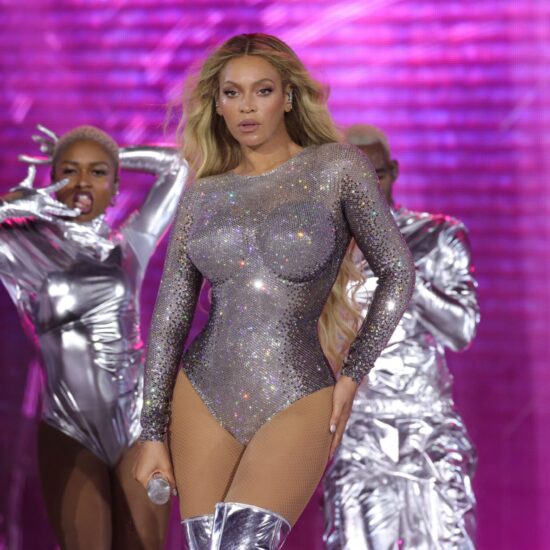
The annual “It’s a Man’s (Celluloid) World” report found that films with at least one woman director or writer had a majority of female protagonists.
The annual “It’s a Man’s (Celluloid) World” examined the top-grossing films of 2022 and, boy, do we still have some catching up to do.
Unveiled just in time for International Women’s Day (March 8), the study led by Dr. Martha M. Lauzen found that there was a 2 percent jump in female protagonist characters from 2021, with women additionally accounting for 37 percent of all speaking roles last year. Yet still, 80 percent of films featured more male than female characters. Only 11 percent of films had more female than male characters, and 9 percent of films featured equal numbers of female and male characters.
The key to more women’s stories on screen? Unsurprisingly, it’s more women behind the camera.
Across the findings of a content analysis of over 2,100 characters appearing in films in 2022, films with at least one woman director and/or writer were more likely than films with no women in these roles to feature higher percentages of females as protagonists, in major roles, and as speaking characters. The specific results showed that women comprised 56 percent of protagonists in female filmmakers’ projects, compared to just 23 percent of female protagonists in male-dominated films.
For the purposes of the study, “protagonists” are defined as the characters from whose perspective the story is told. Major characters appear in more than one scene and are instrumental to the narrative of the story. Speaking characters include all major and minor characters. Movies highlighted as complex representations of women from the past year included “The Woman King,” “Women Talking,” “Smile,” “Scream 5,” “Don’t Worry Darling,” and more. But the percentage of female characters increased only slightly from 2021.
As “It’s a Man’s (Celluloid) World” found, in 2022, females accounted for 33 percent of sole protagonists, up two percentage points from 31 percent in 2021. The percentage of women in speaking roles increased by three percentage points, from 34 percent in 2021 to 37 percent in 2022. And the number of women-centric comedies is dwindling at just 3 percent, while women thrive in horror.
But what are the types of women being shown onscreen?
Female characters are still staggeringly younger than their male counterparts, “diminishing in alarming numbers around the age of 40,” as the study found.
“When the majority of female characters remain under 40, they are less likely to hold positions of great personal and/or professional power,” the study analyzed.
As for racial representation, in 2022, 64.2 percent of female characters in speaking roles were white (up from 60.6 percent in 2021), 18.0 percent were Black (down from 19.3 percent in 2021), 6.9 percent were Latina (down from 9.5 percent in 2021), 8.1 percent were Asian or Asian American (down from 8.4 percent in 2021), and zero were Native American (down from 0.3% in 2021). The one non-binary character from a top-grossing film last year was white, according to the study, while 67 percent of transgender characters were Black and 33 percent were white.
Such characters are also less likely to have work-related goals in the plot; instead, the collective focus is on personal life-related goals, such as dating.
As for genre films, female protagonists were most likely to appear in horror features (43 percent), followed by dramas (37 percent), action features (10 percent), animated features (3 percent), comedies (3 percent), and features in other genres (3 percent). Is it truly the death of the female-led comedy?
Male protagonists were most likely to appear in action features (30 percent), followed by dramas (23 percent), comedies (19 percent), animated features (19 percent), science fiction features (4 percent), and horror features (4 percent).
The “It’s a Man’s (Celluloid) World” study has monitored portrayals of girls and women in the top 100 domestic-grossing films since 2002. It is the longest-running and most comprehensive study of women’s representation in film available. Overall, this project has considered the representation of over 27,000 characters appearing in more than 1,200 films over the last two decades.
Sign Up: Stay on top of the latest breaking film and TV news! Sign up for our Email Newsletters here.












